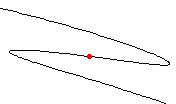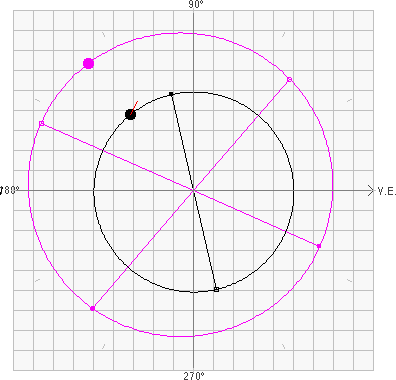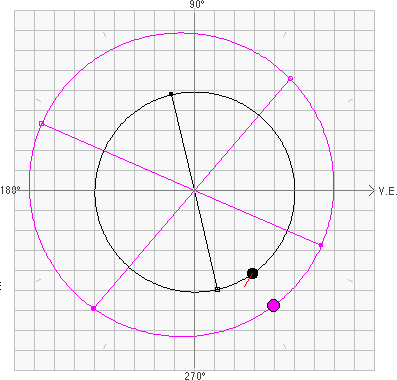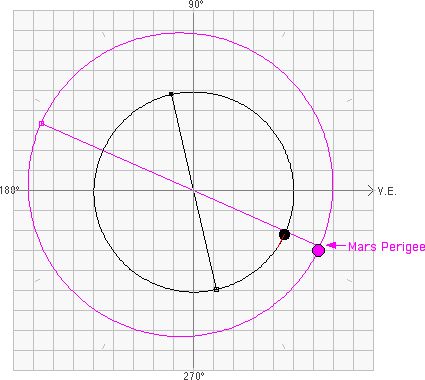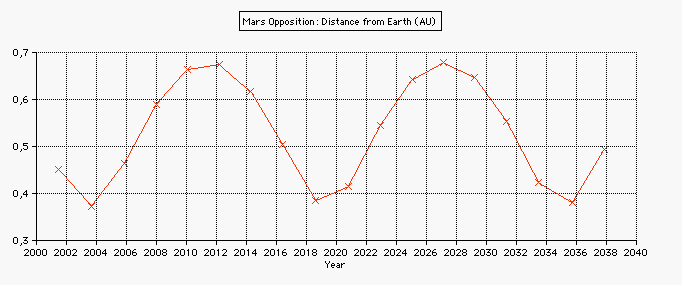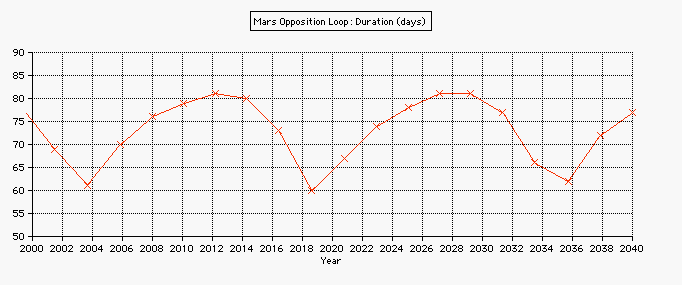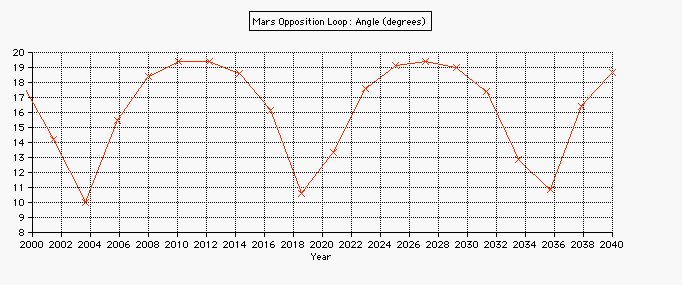Oppositions in the winter are occuring at large altitudes:
Example (Berlin, 52.51° N):
2001, Jun 13 at 01:05 CEST: altitude 11°
2007, Dec 25 at 00:11 CEST: altitude 64°
1. The period of oppositions
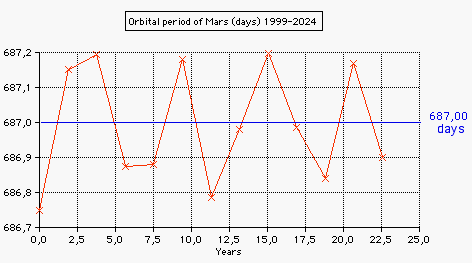
The the mean orbital period (interval of time between subsequent perigee passages) is 687,00 days,
and varies by about +/- 5 hours.

The period of oppositions T is the synodic period of Mars and the Earth:
1/T = 1/TMars + 1/TMars
T=779.9 days
The interval of time between subsequent oppositions (mean: 781 days = 2 years, 1 month, 20 days),
the synodic period of Mars, varies by about +/- 1 month.
2. The shape of the opposition loops
 Mars
Oppositions (1950-2061)
Mars
Oppositions (1950-2061)Enable JavaScript !

